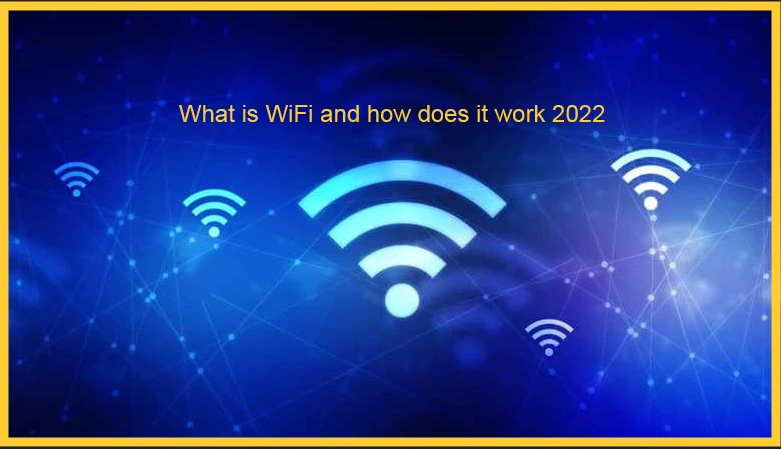In today’s digitally connected world, What is WiFi, has become an essential part of our daily lives, enabling us to connect to the internet wirelessly from virtually any device. But what exactly is WiFi, and how does it function in 2024? This guide provides an in-depth look at the evolution of WiFi technology, its underlying mechanics, and the advancements that have made it faster and more reliable than ever before.
Understanding WiFi: The Basics
WiFi is a wireless networking technology that allows devices such as smartphones, laptops, tablets, and smart home devices to connect to the internet or communicate with each other wirelessly within a specific area. WiFi operates using radio waves, which transmit data between devices and a central router or access point that is connected to the internet.
The term WiFi is actually short for Wireless Fidelity, and it functions based on the IEEE 802.11 standards, which define the technical aspects of wireless networks. These standards have evolved over the years to support faster speeds, greater range, and improved reliability, culminating in the current standards used in 2024.
How WiFi Works: The Technical Breakdown
At its core, WiFi technology works by converting data into radio signals and transmitting these signals between a router and a WiFi-enabled device. Here’s a step-by-step breakdown of how this process works:
1. Data Transmission
When you request data from the internet, such as loading a website or streaming a video, your device sends this request to the router. The router then converts this data into a radio frequency (RF) signal and transmits it over the air.
2. Signal Reception
WiFi-enabled devices, such as your smartphone or laptop, are equipped with wireless adapters that can receive and interpret these RF signals. When your device receives the signal, it converts it back into the data that you see on your screen, such as a webpage or video.
3. Frequency Bands
WiFi operates on two main frequency bands: 2.4 GHz and 5 GHz. The 2.4 GHz band provides longer range but at slower speeds, while the 5 GHz band offers faster speeds but with a shorter range. In 2024, many modern routers also support the 6 GHz band, known as WiFi 6E, which offers even faster speeds and reduced interference, making it ideal for densely populated areas and high-bandwidth activities like 4K streaming and online gaming.
4. Wireless Standards
As of 2024, the most commonly used wireless standards are WiFi 5 (802.11ac) and WiFi 6 (802.11ax), with WiFi 7 on the horizon. WiFi 6 introduced significant improvements over previous generations, including faster speeds, better performance in crowded environments, and enhanced security features. WiFi 6E takes these advancements further by utilizing the 6 GHz band, offering additional channels and reduced latency.
5. Encryption and Security
Security is a crucial aspect of WiFi networks. To protect your data from unauthorized access, WiFi networks use encryption protocols such as WPA2 and the newer WPA3 standard introduced in 2018. WPA3 offers stronger security measures, including individualized data encryption and protection against brute-force attacks, making it the recommended choice for securing WiFi networks in 2024.
What is WiFi in 2024: Latest Developments and Innovations
WiFi technology has come a long way since its inception, and 2024 brings several key developments that further enhance its capabilities.
1. WiFi 6E and the 6 GHz Spectrum
One of the most significant advancements in WiFi technology is the introduction of WiFi 6E, which expands WiFi into the 6 GHz spectrum. This new frequency band provides additional bandwidth, allowing for more devices to connect simultaneously without interference. WiFi 6E is particularly beneficial in environments with a high density of connected devices, such as smart homes, offices, and public spaces.
2. Improved Mesh Networking
Mesh networking has gained popularity as a solution for extending WiFi coverage in large homes or buildings with multiple floors. A mesh network consists of a main router and several satellite nodes placed throughout the area. These nodes work together to create a single, seamless WiFi network, eliminating dead zones and ensuring consistent coverage. In 2024, mesh networking technology has been further refined, with faster speeds, easier setup processes, and enhanced management features through smartphone apps.
3. Enhanced WiFi Security
As cyber threats continue to evolve, so too does the need for robust WiFi security. In 2024, WiFi networks are more secure than ever, thanks to the widespread adoption of WPA3 encryption. WPA3 not only provides stronger protection against hackers but also simplifies the process of connecting new devices to the network, particularly with the introduction of Wi-Fi Easy Connect, which streamlines the onboarding process for IoT devices.
4. WiFi 7: The Next Frontier
Looking to the future, WiFi 7 is the next major leap in wireless technology, expected to roll out in the coming years. WiFi 7 promises even faster speeds, lower latency, and improved efficiency, making it ideal for data-intensive applications such as virtual reality, 8K video streaming, and cloud gaming. While WiFi 7 is still in the early stages of development in 2024, it’s poised to revolutionize how we connect and interact with digital content in the near future.
The Role of WiFi in the Internet of Things (IoT)
In 2024, WiFi plays a central role in the expanding Internet of Things (IoT) ecosystem. From smart home devices like thermostats, security cameras, and lighting systems to industrial IoT applications in manufacturing and logistics, WiFi provides the wireless connectivity that powers these devices. As the number of connected devices continues to grow, WiFi technology evolves to support the increased demand for bandwidth and reliable connections.
1. WiFi 6 and IoT
WiFi 6 is particularly well-suited for IoT applications, thanks to its ability to handle a large number of devices simultaneously without compromising performance. This is achieved through technologies like OFDMA (Orthogonal Frequency Division Multiple Access), which allows the router to divide a single channel into smaller sub-channels, enabling multiple devices to communicate at once.
2. Energy Efficiency
Energy efficiency is a critical consideration for IoT devices, many of which rely on battery power. WiFi 6 introduces a feature called Target Wake Time (TWT), which allows devices to schedule when they wake up to transmit or receive data. This reduces the amount of time a device’s radio is active, conserving battery life and extending the operational lifespan of IoT devices.
Setting Up and Optimizing Your WiFi Network in 2024
Setting up a WiFi network in 2024 is more straightforward than ever, thanks to advancements in router technology and user-friendly interfaces. Here are some tips to ensure you get the most out of your WiFi network:
1. Choose the Right Router
Selecting a router that supports the latest WiFi standards, such as WiFi 6 or WiFi 6E, is essential for maximizing speed and coverage. Consider your specific needs, such as the size of your home, the number of connected devices, and the types of activities you engage in, such as gaming or streaming, when choosing a router.
2. Optimal Router Placement
The placement of your router significantly impacts the strength and reach of your WiFi signal. Place the router in a central location, away from walls, metal objects, and other potential sources of interference. If your home has multiple floors, consider a mesh network to ensure consistent coverage throughout.
3. Secure Your Network
Always use a strong, unique password for your WiFi network and enable WPA3 encryption for enhanced security. Regularly update your router’s firmware to protect against vulnerabilities and ensure your network is running the latest features.
4. Monitor and Manage Your Network
Use the router’s management app or web interface to monitor connected devices, manage bandwidth, and set up parental controls if needed. Many modern routers offer features such as guest networks and quality of service (QoS) settings, which allow you to prioritize certain devices or activities to ensure optimal performance.
Conclusion: WiFi in 2024 and Beyond
WiFi technology has come a long way since its inception, and in 2024, it continues to be the backbone of our digital lives. With advancements such as WiFi 6E, improved mesh networking, and enhanced security protocols, WiFi is more reliable, faster, and more secure than ever before. As we look to the future, WiFi 7 and the ongoing integration of WiFi with the Internet of Things promise to further revolutionize how we connect and interact with the world around us.







